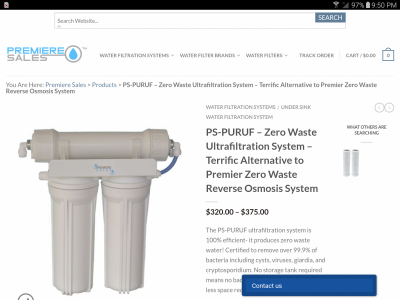I'm used to getting various doodads from aliexpress (figuring most of what I buy locally comes from the same Chinese suppliers ultimately) and when planning my reef tank thought I'd give it a whirl for RO/DI.
I found inline filters:
Would i need a flow restrictor after the membrane, and are these avail. with built in flow restrictors?
Does it seem like a reasonable setup? It sums to around 80$ . I dont particularly care about flow rates, I can leave this on overnight if need be.
I found inline filters:
Would i need a flow restrictor after the membrane, and are these avail. with built in flow restrictors?
Does it seem like a reasonable setup? It sums to around 80$ . I dont particularly care about flow rates, I can leave this on overnight if need be.
















